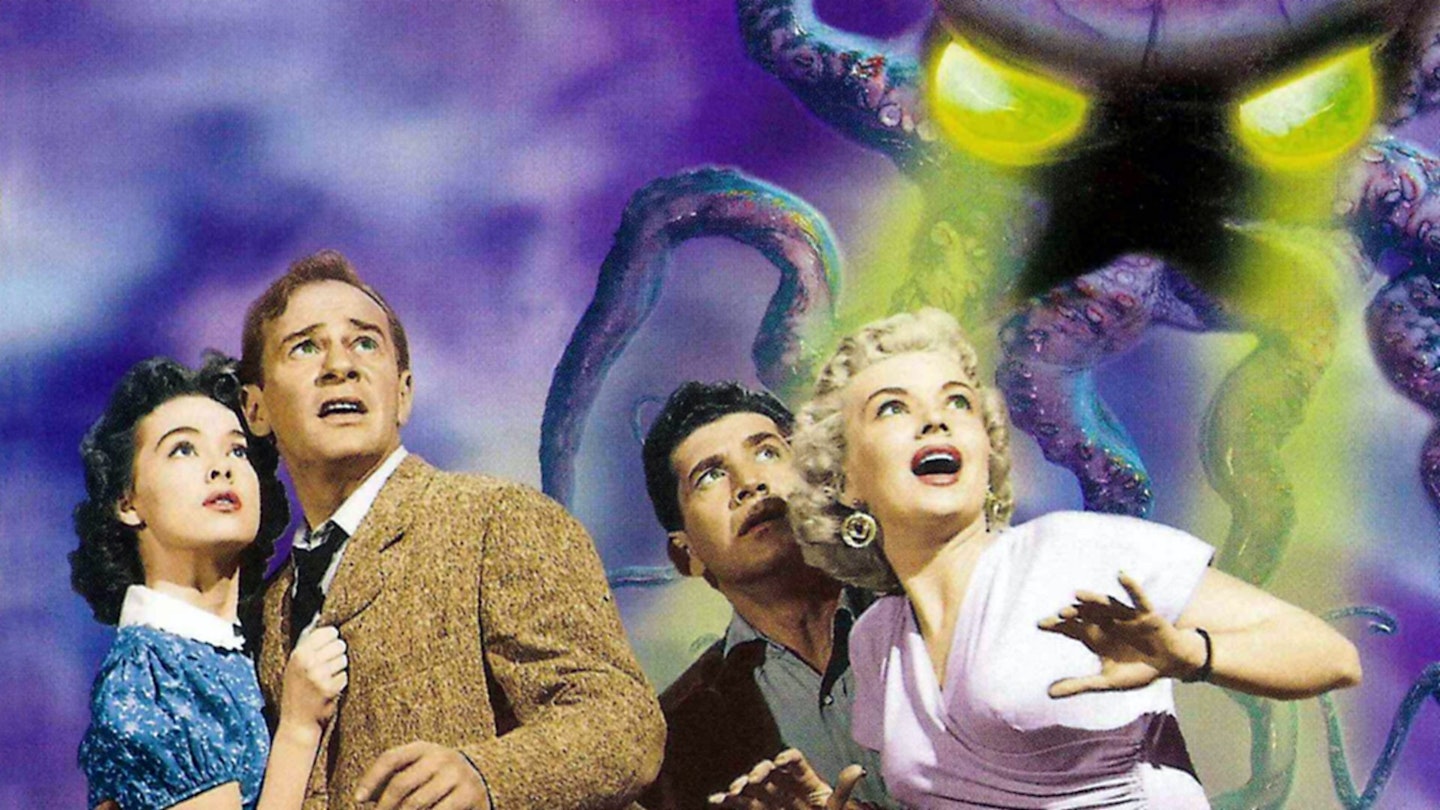Originally in 3‑D, this archetypal 1953 sci-fi film opens with a blazing meteor zooming out of the screen to crash into the desert and then spins an eerie, unusual science fiction story (a screen original by Ray Bradbury, hence a few stretches of ‘poetic’ voice-over) about a saucerload of ‘xenomorphs’ stranded in the Arizona desert. The one-eyed, tentacled, fog-shrouded things from another world are barely glimpsed, but the film makes extensive, precedent-setting use of a later creature feature cliché – the distorted subjective camera looming over screaming humans to convey the monster’s point of view.
Unlike most 1950s flying saucer films, the script is somewhat sympathetic to the aliens, who mainly aren’t a threat to anyone and (like E.T.) just want to go home, even if they have to co-opt the form of local bipeds to get their ship repaired. Entertainingly, one of the crew turns out to be a psycho who memorably impersonates the heroine, swanning about the edge of a crater in a chic evening dress while wielding a mean raygun. It has the tinny domestic scenes and off-the-peg performances typical of early '50s s‑f, but director Jack Arnold – who would continue in the genre with remarkable films like The Creature From the Black Lagoon and The Incredible Shrinking Man - does wonderful things with the natural eeriness of the desert setting. Bizarrely, there was an It Came From Outer Space 2 in 1996, though that turned out to be a TV movie remake rather than an actual It Came Back From Outer Space sequel.
